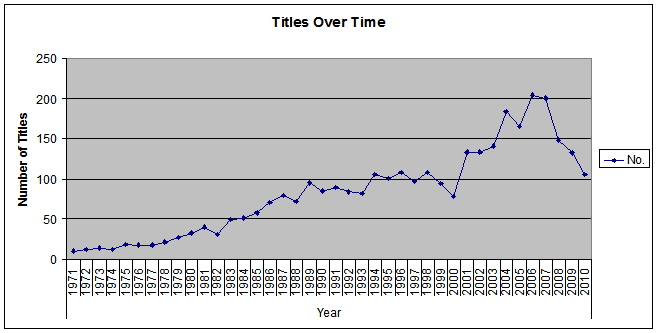Well a few years ago I did something which I would never ever have time to do these days: I sat down with the internet and complied some information about the length of various shows. It wasn't the worlds best research because I only looked at four years (and even that took hours) but the results are as follows:
So the change is pretty apparent over time.
There are two major changes which this chart reflects, and which I feel should be clearly distinguished:
1. The rise of late-night anime. During the 1980s and most the 1990s, almost all TV anime aired during the daytime, was aimed at general audiences, and usually ran for a large number of episodes. There were also much fewer shows per year than over the past decade. Anime aimed at the smaller niche and/or with more risque content made up the thriving OVA market. Around 1997, more and more anime began airing during late-night TV slots, siphoning off the more otaku-oriented and adventurous content from the OVA market, and steadily grew into the market we have today. Early examples would be
Those Who Hunt Elves (2 12-episode seasons in 1996 and 1997) and
Serial Experiments Lain (13-episode season in 1998). Late-night anime has always been 26 episodes or less, with rare exceptions such as
Monster, probably because the production committee has to bear the financial burden without being able to rely on steady income from outside advertisers. If you restricted your examination to daytime anime, which is still aimed at kids and families, I believe you would find that even today most shows tend to be long-running, often around a year.
Space Brothers, as it airs at 7 AM on Sundays, falls into this category.
2. The shift within late-night anime. As you can see from the above examples, 1-cour shows have always been a significant part of late-night anime, but what is undeniable is that there were a fairly large number of 2-cour shows during the height of the anime boom in the mid-2000s, and that number has steadily dropped as the industry has contracted. What is somewhat counterbalancing that decline now is the recent trend of split-cour shows, such as
Natsume,
Fate/Zero, and
Rinne no Lagrange. The split-cour format allows longer stories to be told while making it a bit easier on the production staff to crank out episodes, so we'll see if it continues to grow in future seasons.









